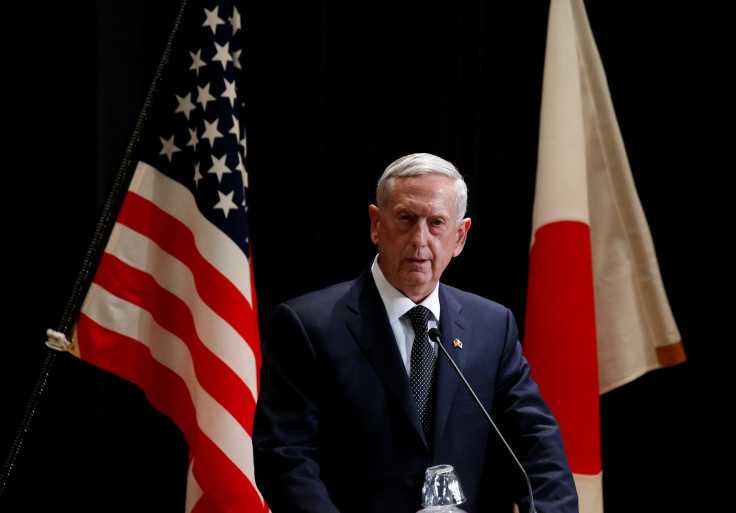Is Donald Trump Right About NATO? Defense Spending, How Much Each Member Country Has Contributed Of Late

Along the campaign trail, President Donald Trump went back and forth when it comes to his support of the North Atlantic Treaty Organization. But the president recently told the military that he was for NATO as long as the other 27 member nations paid their “fair share” to support the alliance that has kept Europe stable since World War II.
That sentiment was echoed by NATO Secretary-General Jens Stoltenberg Tuesday at a press conference in Brussels, a day ahead of the scheduled arrival of new U.S. Defense Secretary James Mattis for his first meeting with European defense officials, the Associated Press reported.
"Fair burden-sharing and increased defense spending underpins the trans-Atlantic alliance," Stoltenberg said. "If we reduce defense spending in times when tensions are going down, we have to be able to increase defense spending when tensions are going up as they are now."
Some of the member countries have recently committed to expanding their defense budgets, at the rate of 2 percent of their gross domestic product. However, it’s clear the U.S. will remain the top spender when it comes to NATO for some time.
According to official data from NATO, the financial crisis of 2008 greatly affected the alliance’s overall budget. In 2009, overall defense expenditures dipped by 2.7 percent, and then from 2010 to 2012, 2.4 percent more for each year. The cuts were then 1.7 percent in 2013 and 1 percent in 2014, before increasing by 0.6 percent in 2015 and a huge 3 percent last year.
While the U.S. also made cuts between 2009 and last year, it is still far and away the biggest contributor to NATO. In 2016, the U.S. offered up more than $664 million, which was a big drop from the more than $757 million it paid in 2009. But over the last 3 years, the U.S. has consistently provided, roughly, at least 3.5 percent of its gross domestic product to NATO’s defense budget.
The next closest country compared to the U.S in the last three years? Greece at a high of 2.38 percent last year, followed by the United Kingdom at 2.21 percent, Estonia at 2.16 and Poland at 2 percent.
To put those numbers in perspective, you have to know each countries latest GDP. As of 2015, the U.S. still remains the most dominant economy in the world with a GDP of more than $18 trillion, according to the World Bank.
The next closest and richest NATO member is Germany at No. 4 in the world with more than $4.3 trillion in GDP in 2015; however, the Germans haven’t contributed more than about 1.1 percent of GDP to NATO’s defense efforts. The U.K. is next at No. 5 in the world at $3.3 trillion, followed by France at $2.4 trillion, with the latter reserving 1.78 percent of its GDP to NATO.
© Copyright IBTimes 2025. All rights reserved.





















